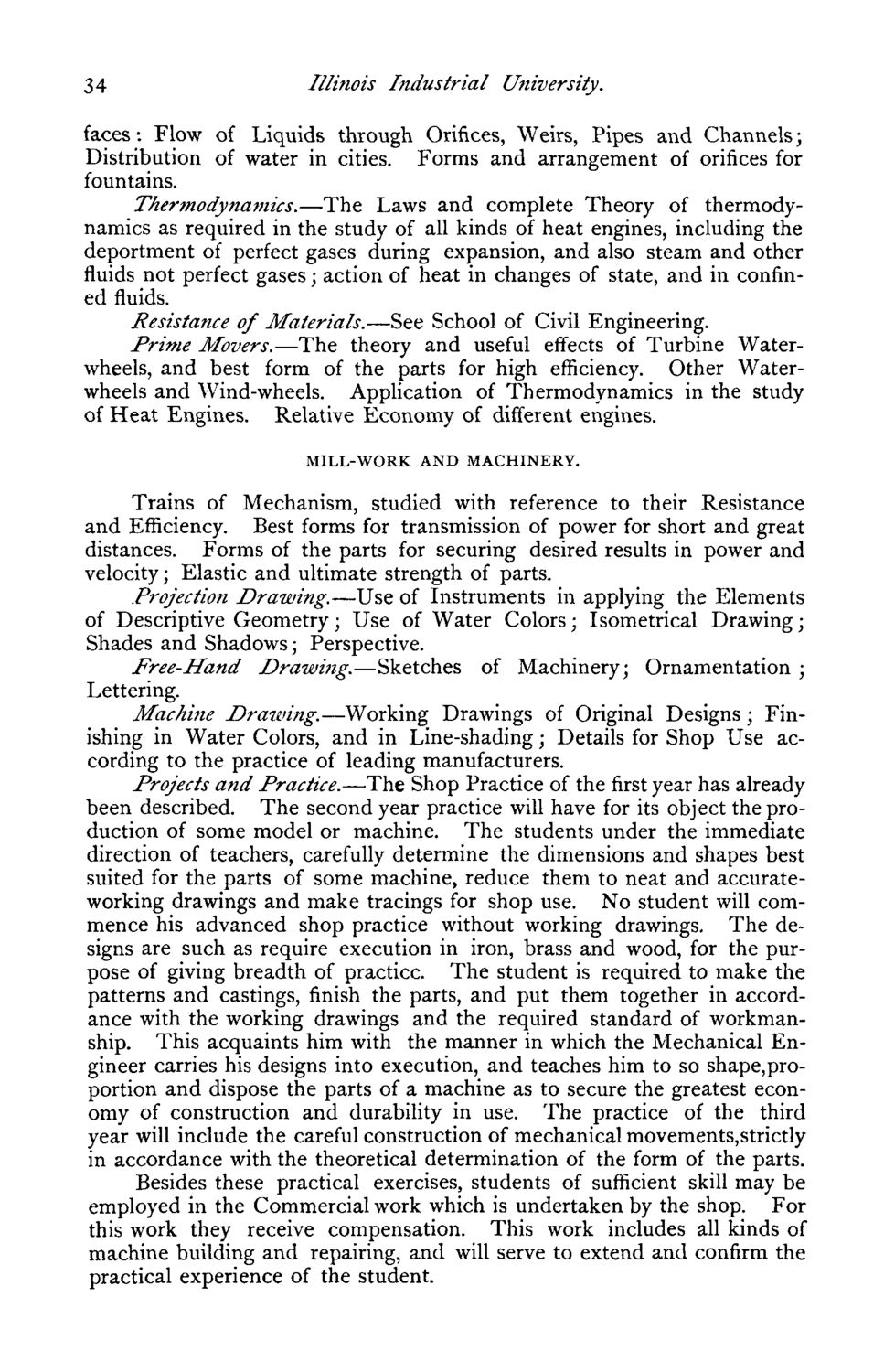| |
| |
Caption: Course Catalog - 1877-1878 Version A
This is a reduced-resolution page image for fast online browsing.

EXTRACTED TEXT FROM PAGE:
34 Illinois Industrial University. faces : Flow of Liquids through Orifices, Weirs, Pipes and Channels; Distribution of water in cities. Forms and arrangement of orifices for fountains. Thermodynamics.—The Laws and complete Theory of thermodynamics as required in the study of all kinds of heat engines, including the deportment of perfect gases during expansion, and also steam and other fluids not perfect gases; action of heat in changes of state, and in confined fluids. Resistance of Materials.—See School of Civil Engineering. Prime Movers.—The theory and useful effects of Turbine Waterwheels, and best form of the parts for high efficiency. Other Waterwheels and Wind-wheels. Application of Thermodynamics in the study of Heat Engines. Relative Economy of different engines. MILL-WORK AND MACHINERY. Trains of Mechanism, studied with reference to their Resistance and Efficiency. Best forms for transmission of power for short and great distances. Forms of the parts for securing desired results in power and velocity; Elastic and ultimate strength of parts. Projection Drawing.—Use of Instruments in applying the Elements of Descriptive Geometry; Use of Water Colors; Isometrical Drawing; Shades and Shadows; Perspective. Free-Hand Drawing.—Sketches of Machinery; Ornamentation ; Lettering. Machine Drawing.—Working Drawings of Original Designs ; Finishing in Water Colors, and in Line-shading; Details for Shop Use according to the practice of leading manufacturers. Projects and Practice.—-The Shop Practice of the first year has already been described. The second year practice will have for its object the production of some model or machine. The students under the immediate direction of teachers, carefully determine the dimensions and shapes best suited for the parts of some machine, reduce them to neat and accurateworking drawings and make tracings for shop use. No student will commence his advanced shop practice without working drawings. The designs are such as require execution in iron, brass and wood, for the purpose of giving breadth of practice. The student is required to make the patterns and castings, finish the parts, and put them together in accordance with the working drawings and the required standard of workmanship. This acquaints him with the manner in which the Mechanical Engineer carries his designs into execution, and teaches him to so shape,proportion and dispose the parts of a machine as to secure the greatest economy of construction and durability in use. The practice of the third year will include the careful construction of mechanical movements,strictly in accordance with the theoretical determination of the form of the parts. Besides these practical exercises, students of sufficient skill may be employed in the Commercial work which is undertaken by the shop. For this work they receive compensation. This work includes all kinds of machine building and repairing, and will serve to extend and confirm the practical experience of the student.
| |